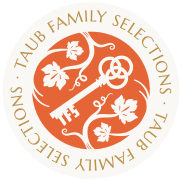

CampoMaccione Winery Star of Tuscany’s Mediterranean Coast

The Zingarelli family are not only fierce advocates for the Tuscan terroir — they are one of the most important wine producers in all of Italy, with 600 hectares / 1,500 acres of prime land divided among six boutique estates across Tuscany, including their original property, Rocca delle Macìe, in the township of Castellina in Chianti. The entire operation is fearlessly led by Sergio Zingarelli, along with his wife Daniela and their children Andrea and Giulia. Together, they’ve ushered in a new and ever-evolving era of quality and exploration.
In 1998, driven by their far-sighted entrepreneurial approach, the family’s eyes wandered west, to an area where the winemaking tradition has exceptionally ancient roots — the coastal district of Maremma. They purchased the 80-hectare / 198-acre CampoMaccione winery within the Morellino di Scansano DOCG, aiming to cultivate sangiovese, along with cabernet sauvignon, merlot, and syrah.
Not long after, and wanting to expand their footprint in Maremma, they added the neighboring Casa Maria farm in 2003 — a spot chosen for its exceptional potential for white grapes, particularly vermentino. The estate’s 144 hectares / 356 acres now produce highly awarded wines of quality and consistency; daily operations are overseen by winemaking ace, Luca Francioni, who has been part of the Rocca team since 1989.
Between these prime-sited vineyards in Maremma and their other remarkable properties, the Zingarelli family continues to emphasize the stellar and varied terroirs of Tuscany. And with sustainability at the core of their viticultural approach, they’ll be able to produce exceptional Tuscan wines for generations to come.

-
Founded
1998 -
Location
Maremma, Tuscany, Italy
Terroir
The Maremma district remains a relatively undiscovered jewel in well-traveled central Italy. Bound by the Tyrrhenian Sea and isolated from Chianti Classico and Montalcino by a twisting spine of densely wooded hills, the region has a rich heritage of viticulture dating to the Etruscans.
Born only six miles from the coast, CampoMaccione’s wines show beautiful typicity of this region. The beneficial sea breeze keeps temperatures in the vineyards low (much cooler than other parts of Tuscany), which in turn gives the wines a pronounced minerality and saline character. The vines also benefit from different exposures — vineyards with a more northwest exposure enjoy a long, cool growing season which is perfect for the phenolic development of white grapes like vermentino, revealing pretty floral notes, intense tropical fruits, and a fresh finish. Vines with warmer, western exposures produce more powerful, ripe styles of sangiovese.
This part of Tuscany is made up of mostly sandy soils that are rich in quartz and limestone. The resulting wines develop high acidity, finesse, and a great potential to age.

Viticulture
Sustainability is key to the Zingarelli family’s approach to viticulture. They aim to reduce the impact of humans on their vineyards and try to avoid non-essential waste and by-products. From the 2023 harvest, they use an organic pest management system which significantly reduces the need to use pesticides. All rain and wastewater are recycled and any erosion on the farms is controlled by dry, stone walls and terracing which improve drainage in the vineyards.
The main varieties grown are sangiovese, cabernet sauvignon, and vermentino. The oldest of the vines were planted in 1999, so some of them are now approaching 25 years of age. They are grown organically, and the team judiciously employs modern technology to achieve the utmost quality. They were planted on cordon and Guyot training systems best suited to the terrain with a density of 6,000 vines per hectare; phytosanitary monitoring stations were implemented to manage every aspect of the grapes’ development. The vineyard team has also undertaken extensive soil studies to identify each plot so grapes can be harvested separately at exactly the right time.

The Winemaking Behind the Tuscan Wines
Grapes are picked at optimal ripeness but also, if required, early in the morning to avoid the heat and maintain the freshness of the wines. Pressing is very gentle and fermentation takes place in stainless steel tanks at controlled temperatures; the wines then rest and refine for a short period in cement vats. This is a simple approach to winemaking with the goal of preserving the vibrant fruit character of the wines. These methods also aim to avoid over-extraction to produce balanced wines with elegant tannins.









